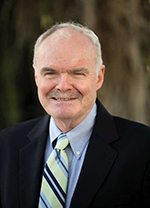Report From The Club Scene

Two weeks ago following the Fort Lauderdale Historical Society's Founders Dinner, which honored Wayne Huizenga as "Man of the Centennial," we expressed amazement that the dinner raised an estimated $400,000 for the Historical Society. That’s about four times the usual proceeds from a dinner that has long been a major fundraiser for the group. We wondered if any local dinner had ever topped that, or if any similar event sold out and had a long waiting list without even having to send out invitations.
And with that, we went up to the Treasure Coast to visit some private clubs where we made the mistake of wondering aloud to the director of the prestigious Bear’s Club if any dinner up that way had ever made such money. Nonchalantly, she mentioned that two recent dinners at the club had raised more than $1 million. However, we are pretty sure those dinners sent out invitations and the invitees were the cream of Palm Beach, many of whom threw in a generous contribution with their table price. The Bear's Club was built by Jack Nicklaus, as a great golf course first, and a club with limited residences as a second thought. Among the residents are Ernie Els, soon to be joined by Michael Jordan, and the outside membership is equally forceful, with such names as Wayne Huizenga and Roger Penske.
We chanced upon the Bear's Club not really by chance, but as part of a survey for Gulfstream Media Group’s Treasure Coast publications on private clubs in the Treasure Coast area. The Jupiter area has to be one of the most over clubbed places on the planet. There are at least a dozen in a five square mile area, which includes Palm Beach Gardens and North Palm Beach. A place that used to be defined by a famous lighthouse might today be called "Country Club Haven." In several cases they are next to each other.
Almost all of them can trace their history to land owned by John D. MacArthur, who at one time owned 100,000 acres in Florida, much of it north of Palm Beach. MacArthur started the country club development in the 1960s with JDM, which underwent changes of ownership before becoming Ballenisles. Later, he and his wife’s foundation sold off additional land tracts, much of it now sprawling clubs. Burt Haft and Jack Gaines, who developed Inverrary, built Frenchman’s Creek in the 1970s, and other clubs soon followed.
It has created a very competitive market for the credit-worthy buyer, and the oldest clubs are now upgrading facilities to attract new members, replacing the original, aging residents. They have to. In a tough economy, clubs are not exempt from hardship. Most of the major financial publications have covered the story – clubs under strain with declining memberships. The National Golf Foundation published the telling stats: Up to 20 percent of clubs nationally are in financial distress. Those troubled clubs’ membership is down 29 percent from their peaks. Golf rounds are down 22 percent. Fifty-seven percent of country clubs are operating at a loss.
Clubs have to be agile to improve facilities to attract new families before the older members get too old to care (meaning, pay for stuff they won’t long use). Some clubs in Palm Beach and Broward Counties already missed the boat. Some have been forced to go public, which doesn’t mean the same thing as in the stock market. The other choice is to sell off the golf course, and there goes the neighborhood.
It’s happening all over. The National Golf Foundation quotes one expert as saying 20 percent of the 4,700 private country clubs in the U.S. won’t be here five years from now.
Add new comment
